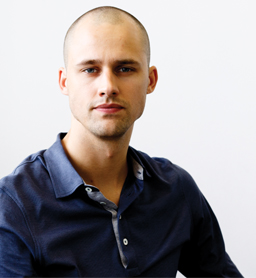Creamfinance is carving itself a niche in consumer lending, with fast decision-making and clear fees. The company’s co-founder and chief executive explains its philosophy to Silvia Pavoni.
“I was a graduate analyst at an investment bank and realised that banking sucks,” says Matiss Ansviesulis, co-founder and chief executive of Creamfinance, a European fintech consumer lender that has recently launched operations in Latin America too. He says that the experience of working for a large, highly structured corporation as an employee convinced him of the need to be his own boss. “I always wanted to do something on my own. I spent one year at JPMorgan in London and during that time I was laying the foundations of my company,” adds Mr Ansviesulis.
He then moved back to his home country, Latvia, in 2012, launched Creamfinance and focused on the venture full time.
The company is a balance sheet lender which, after initial stakes by angel investors and a €5m investment by Silicon Valley-based venture capital fund Flint Capital in 2014, is now tapping into the specialist debt market through bond issuances and by raising venture debt.
Diversifying the funding base is crucial. “We’re not a peer-to-peer platform and we don’t want to be. We take all consumer credit risk and therefore it’s important for us to borrow money,” says Mr Ansviesulis.
Right first time
Finding clients was not hard, says Mr Ansviesulis, thanks to the appeal of the fast decision-making process that his company could offer – as opposed to the longer times often required by mainstream lenders – the convenience of applying for loans online, and the clear fee model. This is in line with other start-ups in this space, but what sets Creamfinance apart from others, points out Mr Ansviesulis, is that the company’s main focus, right from the beginning, was on fine-tuning operations rather than fuelling growth.
“Demand has never been an issue, but providing loans in a profitable way, from a credit risk management point of view [that’s the challenge],” he says. “From day one we were focused on profitability and sound operations, as opposed to raising as much money as possible and experimenting with a lot of ideas. It’s always been operational excellence and profitability first, and marketing and crazy growth second,” he adds, pointing out that this was a disadvantage at the beginning as there were companies competing for the same funds that were expanding at a faster rate.
But while this might have turned off investors at the time, as economic and market conditions changed over the past couple of years and investors became more cautious, profitability rather than fast growth suddenly become a more desirable attribute. “We know that operational quality, which translates into profits month in month out, is what [now positively] differentiates us from competitors,” says Mr Ansviesulis.
Since its launch, Creamfinance has expanded in five central and eastern European markets and now employs more than 200 people; it closed 2016 with more than €35m in revenues. The company settled its headquarters in Poland, rather than Latvia, because of the size of the market and the quality of staff it could recruit there. Although a digital provider, regional offices are important to the company’s business model too. “In terms of size of the market and quality of people, Poland made more sense than Latvia or the Czech Republic,” says Mr Ansviesulis. “Most of our top management sits in the central office, but then we’re very diversified and split across various offices. I don’t see the value of having everybody in one place. We need to be close to our consumers.”
Heading west
Creamfinance prides itself on being different from other companies in the way it uses financial technology. Not everything can or should be done online, according to Mr Ansviesulis. “Our focus is credit risk management and how we set up operations. There’s this perception that you need to make businesses [such as ours] as pure technology operations, and that the people factor doesn’t matter. That’s simply untrue. The magic in our business is finding the balance between localised operations and hi-tech automation,” he says.
In November, Creamfinance applied this formula to the Mexican market too. An ocean away from the more familiar European territory, the Latin American country’s consumer market has attributes that make it comparable to markets where Creamfinance has already applied its model. Mexico’s more than 100 million young people with sufficient levels of financial literacy are a good starting base. This is coupled with good levels of consumer credit information and the reliable nature of the country's legal system, which also permits the enforcement of electronically signed documents, necessary for online-based products.
The mix of traditional and innovative credit scoring, of digital services and a local physical presence, has served Creamfinance well. “We can do underwriting of consumer credit in Denmark as well as in Georgia and [now] in Mexico,” says Mr Ansviesulis. “We built know-how into the company that enables us to go beyond our home.” A mix of ambition and caution on the part of the management is helping the company’s expansion too.



